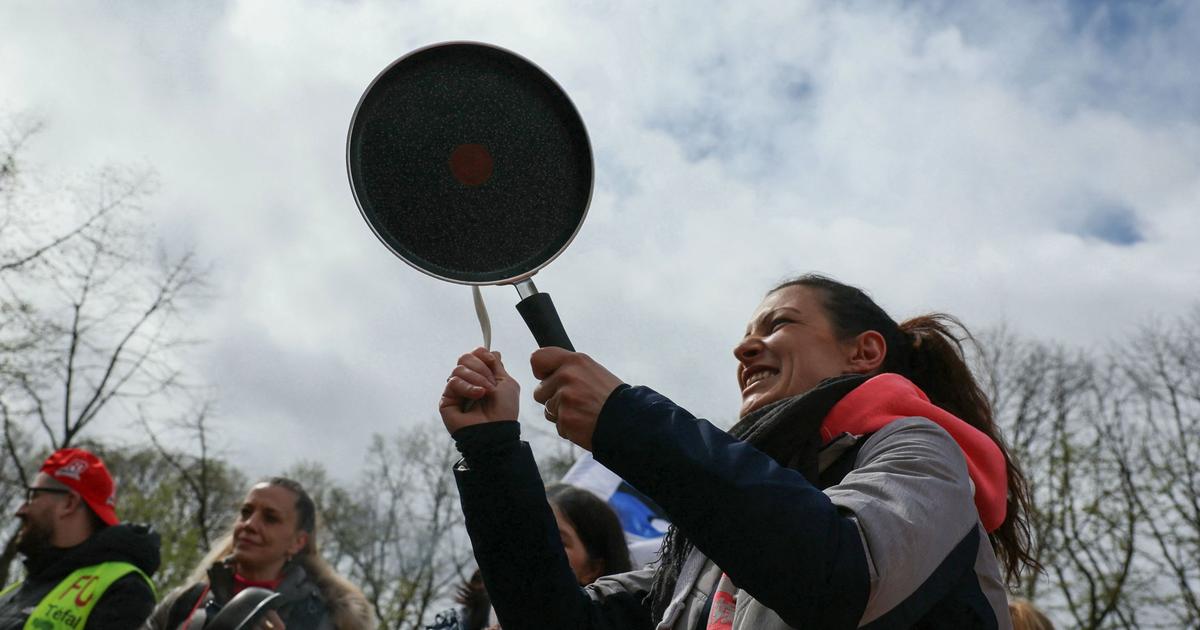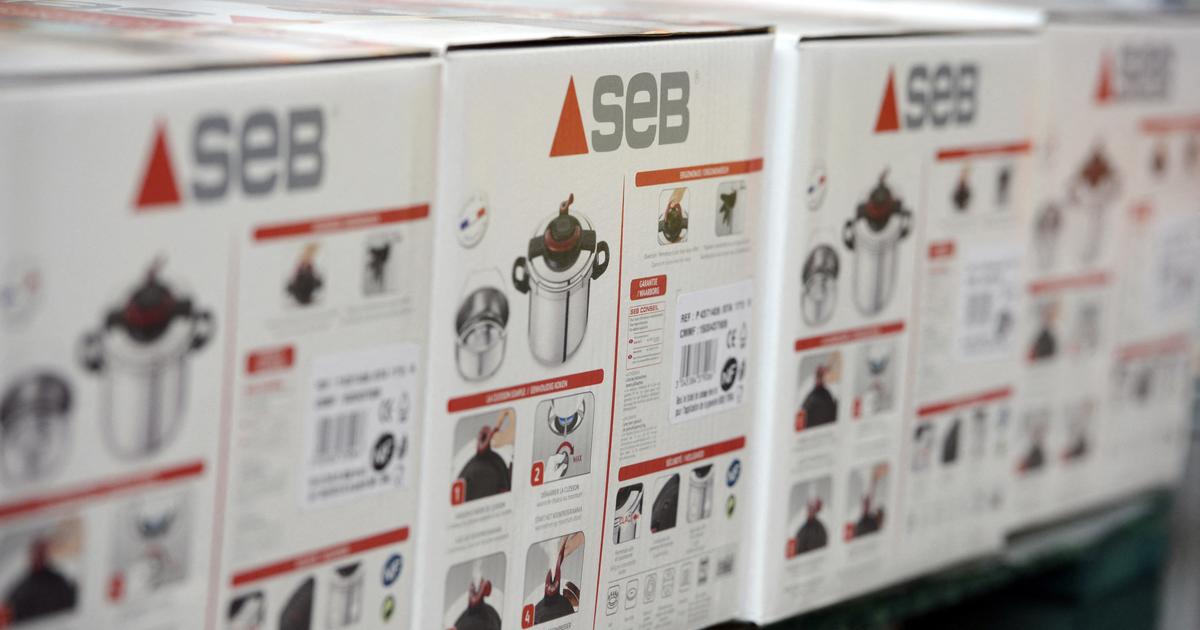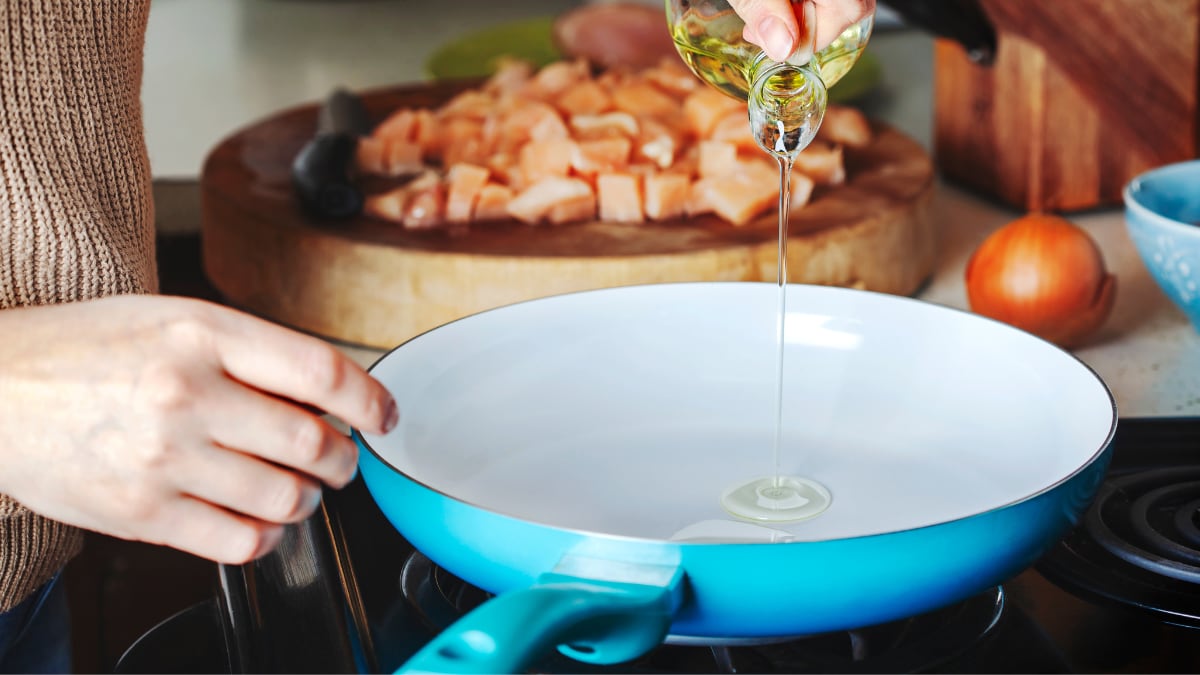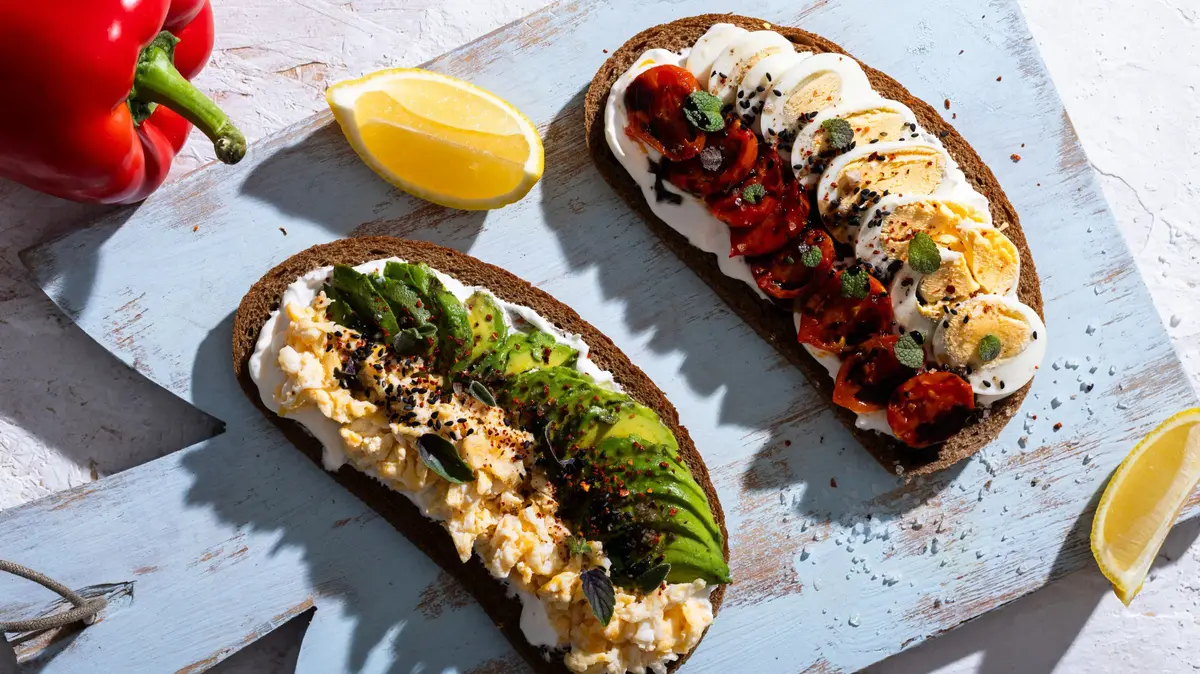Everyone knows it: the pan is getting older, fat and residue crusts up, and cleaning is done with proper scrubbing.
How dangerous is it really to damage the coating in the pan?
Coated pans
are very popular.
Discussion about the
safety of the pans:
is the coating toxic?
What to look out for when using and cleaning Teflon pans.
Offenbach - “Don't put a fork in the
coated pan
”, many hear these words of your mother saying an inner voice when you stand in the kitchen and sear something.
One could almost say that it is an unwritten law in Germany that a fork is not
handled
in a
coated pan
.
The
coating will
break from this.
And not just about it, you shouldn't scrub the pan with a steel sponge or steel wool, put cold water in the hot
pan
after boiling
and, ideally, don't put the good Teflon pan in the dishwasher.
But why all this and how do you clean a pan after
cooking
preferably?
We have the most important tips for you.
Protecting the coating: what's the best way to clean a pan?
The
best way
to clean
a
pan
after cooking
also has a bit to do with the material the pan is made of.
Basically, pans with a
ceramic surface
or
cast iron
pans are particularly sensitive.
Under no circumstances should they be put in the
dishwasher
.
The widely used
Teflon pan
is a little less sensitive, but shouldn't be cleaned regularly in the dishwasher.
In addition, coarse and stubborn dirt should at least be soaked beforehand.
Stainless steel pans, on the other hand, are the least sensitive and can be put in the dishwasher with a clear conscience.
+
The fork in the pan destroys the coating, they say - but is a scratched coating only annoying or also dangerous?
© Angelika Warmuth / dpa
Ideally, you should
just
roughly
wipe the
pan
with a little
kitchen paper
immediately after
cooking
.
Then let the pan cool down.
Because if you put cold
water
into the hot pan, it can warp or bulge the bottom of the pan - this also destroys the coating.
If the pan is cold, you can try the finer cleaning.
Some simple
home remedies will
help loosen fat and food residues from the pan or a dirty baking sheet
:
baking powder
vinegar
salt
All three
home remedies
are very simple and relatively similar to use: add salt, baking powder or vinegar to the pan, add hot water, and wait.
It can sometimes be helpful to boil the vinegar-water mixture, which should have a ratio of about 1: 3, in the
pan
before allowing it to take effect and cool down.
Then you can
simply remove
the residue and
dirt
with a soft cloth.
How to clean the pan properly: scratched coating - can Teflon pans become toxic?
But even with correct and careful cleaning, the
coating on a Teflon pan can peel off over
the years, get scratches and abrasions - then do I have to throw the pan away?
Usually not.
The danger of Teflon, or scientifically polytetrafluoroethylene (PTFE), in the kitchen is currently still highly controversial.
The Federal Institute for Risk Assessment
(BfR)
has
initially declared PTFE coatings
to be
non-
toxic.
In the assessment, however, it must be taken into account how the substance gets into the body.
If the
pan is scratched
, either small particles of the coating can be swallowed through the food, or gases can form when heated, which we inhale.
Teflon / PTFE
Polytetrafluoroethylene (PTFE) is a plastic made from a combination of fluorine and carbon.
“Teflon” means the same thing and is just a brand name of DuPont, a US chemical company.
In common parlance, however, PTFE and Teflon are used synonymously.
Pan scratched - is it dangerous if I swallow Teflon?
Swallowing small particles of PTFE is harmless to health and
non-toxic
.
There is already broad agreement on this.
Teflon is chemically "inert", which means it is inert and does not cause any damage to the body.
The particles that are
absorbed
into the body
through the food
from the pan
are excreted without residue.
The coated pan therefore only becomes dangerous when it is overheated.
Then the
coated
pan
begins to
"outgas", which means that toxic gases are released and can be inhaled.
Pan overheated: when does a Teflon coating become toxic?
At what
temperature Teflon pans outgas
dangerously is currently still very controversial.
The Federal Institute for Risk Assessment is currently assuming temperatures above 360 ° Celsius.
DuPont, the manufacturer of Teflon, names 260 ° Celsius as the highest safe temperature.
Findings from various animal experiments show that a Teflon hazard can be assumed from a temperature of 202 ° Celsius.
It is therefore still unclear at what temperature there is actually a risk to human health.
The average temperatures when
frying in the pan
range between
180 and 230 degrees
.
The estimates that assume a risk of just over 200 degrees are worrying.
Frying temperatures | Temperature in degrees Celsius |
|---|---|
Water is boiling | 100 |
normal frying temperature | 180 |
Smoke point of highly heatable edible oils and fats | 200 |
Decomposition of PTFE | 202 - 360 (?) |
Self-ignition of edible oils and fats | 350 |
Source: pfannenhelden.de/teflonbeschichtung-giftig |
Is the pan a danger?
"Teflon fever"
According to previous assessments, including those of the BfR, there is a risk of overheating, especially if the pan is heated empty.
The consumer center of Bavaria advises that a
coated pan should
never be heated for more than three minutes, with induction cookers not even one minute, without its contents.
Because PTFE releases toxic vapors when overheated, which can also make you sick.
So-called
"Teflon fever"
or
"polymer fever"
can occur.
This Teflon poisoning can then lead to the following symptoms:
malaise
shortness of breath
a headache
Chill
to cough
hoarseness
fever
Since the symptoms of
Teflon fever
are very similar to those of the flu, it is rarely associated with PTFE poisoning.
Are scratched pans toxic?
According to the
BfR
, cases of illness have so far only been known from the industrial production of
PTFE
and not from private households.
So far it cannot be scientifically ruled out that toxic substances are released from the coating and can get into the food, but there is still no data to prove that
Teflon-coated pans
release a lot of toxic substances into food
that is safe
for would be dangerous to human health.
“If I 'ever' put my fork in the pan, nothing happens.” #Szeneneinerehe pic.twitter.com/pDiqQzgcGi
- Mela Eckenfels (@Felicea) January 6, 2015
Nevertheless, there are a few things you should pay attention to, even if the coating is still intact and not scratched by one or the other fork.
It is recommended to
carefully
follow
the manufacturer's
instructions
for
coated pans
and other Teflon-coated cookware
and in no case
to leave
the pan on the
stove
for too long without its contents
.
This information can include, for example, whether the pan is dishwasher-safe, whether special
cleaning is
necessary
before using it for the first time
and the temperatures up to which it can be heated without hesitation.
(iwe)
List of rubric lists: © Angelika Warmuth / dpa















